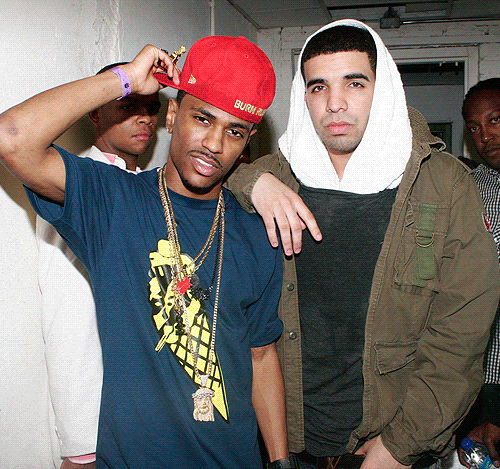Follow Abe Beame down the rabbit hole……..(II)…….
In the late 90s, prior to Napster and the slightly more meritocratic system of Internet rap, there was a type of album that would drop roughly once a quarter. A rapper you’d never heard of before would suddenly make his presence known in the Source and radio with a big, payola fueled lead single. These albums were splashy major label debuts featuring notable guest appearances and blue chip production prominently displayed in the advance billing. They’d sound like a product of their time — they’d replicate rather than anticipate, taking the sounds and attitudes circulating through the mainstream zeitgeist and repackage them for popular consumption. Think breezily listenable, summer blockbuster fare. Not the epic world-stopping stage reserved for a Cameron or Bay, but slightly under-the-radar, slow-week box office money makers. Sleek, harmless and forgettable. In other words, they were Finally Famous.
We’ll probably never get to hear that infamous 16 delivered outside WHTD studios in Detroit — the one that got Kanye to sign Sean in the first place. However, there are a few simple conclusions we can draw. It wasn’t aided by auto-tune, wasn’t backed by soul-heavy, blaring No I.D. production and didn’t have a big-budget hook to complement it. Most likely, it was a punchy, slightly musical string of bars containing a small scope and a studied tight group of couplets. It was delivered in Sean Anderson’s thin and unremarkable register, complete with the shadings of B-Boyism that you can occasionally spot during Finally Famous, when Sean drops the schtick and actually raps. In these moments, he sounds very much like a 23 year-old who grew up in Detroit during the age of Dilla, a Consequence to Slum Village’s Tribe.
The real question to consider is what did Kanye West see that day in 2005 as a slight, eager, aspiring MC spit on the street of a dying post-industrial city? Did he see yet another boom bap everyman — a role the actual Consequence and fellow Midwesterner Rhymefest had formerly filled on end of the G.O.O.D. music bench? Did he see a shadow of himself at roughly the same age, challenging his hero Common to battle in a Chicago radio station? Or did he see something else that day, or in the numerous stalled attempts at launching a Big Sean album, or in the final effort this actual album represents? Did he see a cipher through which he could filter every contemporary trend into a paint by numbers hit? Did he see an impressionable kid willing to do anything to succeed? Did he see a patsy?
Without question, Big Sean is the clearest case of unapologetic artist impersonation and swagger jacking since Guerilla Black. While that artist existed as a one hit novelty, this is a real career being launched in front of our eyes. In his voice, cadence, flow, ad-libs and harmonizing — even in his phrasing – Big Sean is doing an Eddie Murphy-worthy impersonation of Drake. The heist even extends to the same themes, as Sean repeatedly reverts to Drake’s patented ace in the hole: vulnerability to excuses and justify assholishness towards women. This is personality theft on a grand scale.
The problem isn’t that Sean’s a dick. It’s that despite attempting several changes in tone — from anger, to loss, to arrogant swagger, to inebriation — the music suffers from Sean’s inability to sell these respective qualities. He never sounds comfortable. As a listener, you never get the sense that you’re seeing him as a person — something that’s essential in a genre as intimate and confessional as fame rap. Yet occasionally, he relaxes and becomes an amiable goof, as he does on his breakout cut, “My last” (few times have I ever come across such a simultaneously likable artist and listenable album that’s simultaneously so unlikable).
After all, Sean’s reflections on his success are both grateful and wildly enthusiastic. They’re largely unencumbered by the old-soul hand wringing and fear of superficiality that complicate the finest works of his benefactor Kanye and his competitor, Drake. This album has a forced flop sweat all over its slick, super-produced veneer. It’s delivered in a voice that is pretty obviously not Sean’s. This is not a case of inspiration or interpretation, it’s a straight Drake rip. So what exactly is the game here?
Kanye West allegedly carries a grudge towards Drake and his producer 40 for — in his mind– borrowing as liberally from his repertoire as Sean has outright stole from Drake. Perhaps Finally Famous is Kanye’s Machiavellian attempt to flood the mainstream with a particular sound in order to dilute that sound and hasten the upstart’s demise. Perhaps this is a nihilistic wager culminating in a champagne toast on the shore of a tropical island, as Kanye and Plain Pat laugh at the ease with which the sheep can be herded, playing Jehovah and the Adversary to the Roc Marciano diehard’s Job. Perhaps Kanye is showing the world the strings tugging a cynical pop formula. Or maybe it’s all just a satiric farce executed on such a high level that its primary author isn’t even aware of what he’s perpetrating. It all begs the question: Is Big Sean merely a pawn in an epic game of thrones? And how can he call himself Big Sean when he’s only 5’5.
Download:
MP3: Big Sean ft. Rick Ross & Pusha T-“100 Keys“


